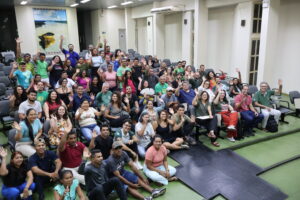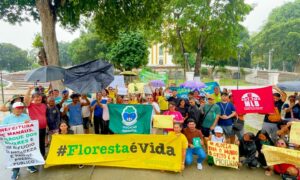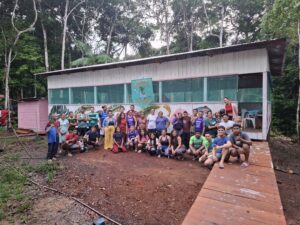By Clara Machado
“Who we are” and “what we know” are concepts so intricate that they can become indistinguishable. After all, we form our knowledge about the world from the experiences we have. And our experiences are determined by our gender, age group, territory, skin color and many other factors that make us up. In that context, I became interested in researching the universe of food and edible plants in the Amazon, and I found very clear differences in what men and women know about this universe. And the consequences of these different ways of knowing are far more complex than I imagined.
On the Purus River, where I had the pleasure of working, the division of labor between genders is similar to other rivers in the Amazon, where men perform paid jobs, such as clearing, harvesting and fishing, and women dedicate themselves to caring for the home and children, which, like anywhere else, is unpaid work. Interviewing the women, I came up with a list of plants well known to them, including species from their swidden agriculture – everyday food such as cassava, squash and banana – and fruit from the community’s backyard, which the children love to eat. The list for men, in turn, was typically longer because, in addition to these domestic plants, there were also wild plants – such as the wild araçá of the flooded forest that only fishermen have access to, or fruit from upland forests that hunters come across on their way. The trees from these further afield forests were a little off the women’s radar, and there were countless times when I mentioned that I had tasted a fruit from the forest and heard a woman lament “wow, I didn’t even remember that fruit! The last time I ate this was many years ago, because I never went into the forest again!” The results of these interviews were published in Rodriguésia Journal in 2020.

As an enthusiast of eating plants and with my interest in strengthening the value chains of native species in the Amazon, I wondered… if not even women in rural communities have access to these plants, who knows about those at the market, the city, or the rest of the country. Women, on the other hand, are the great holders of knowledge about the innumerable traditional forms of food preparation, because they were assigned the role of the kitchen. Therefore, food security is a matter for women, and if women are responsible for family food, it is essential that they be included in the knowledge of wild fruits, so that they can incorporate them into the family’s diet, provide food diversification, enhance biodiversity and riverside food culture.
The role of women as caregivers for the family, gardens, farms and fields, which significantly contributes to the food diversification of families, is sometimes devalued in relation to the paid work carried out by men, who frequent the forests. In this sense, I reflect on the fundamental importance of providing women with access to information under the same conditions as men whenever there are courses and training in communities, expanding the decision-making power of women with regard to family food, the use of biodiversity, the network, and the acquisition of knowledge about the world.






